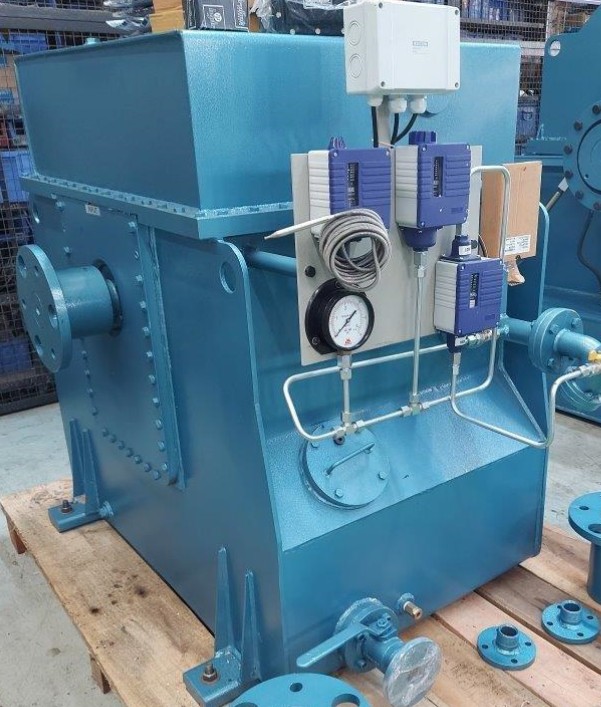
Usage and Maintenance of Variable Speed Hydraulic Coupling
2023-07-14 18:181. Pre Startup Inspection
(1) Check the oil level gauge to confirm if the oil level is appropriate;
(2) Check if the variable speed fluid coupling and cooler pipelines are connected correctly;
(3) Check if the electrical wiring of each instrument is connected correctly;
(4) Check if the connecting coupling on both sides and protective cover are installed correctly;
(5) Check if the oil level in the variable speed hydraulic coupling oil tank is suitable. When the oil temperature is below 5 ℃, an electric heater to heat the working oil is necessary;
(6) Check if the coupling pipe is adjusted to the lowest speed device.
2. Running
(1) The variable speed hydraulic coupling is equipped with an electric actuator, which is manually operated. Manually operated or automatically controlled electric actuators are used to adjust the position of the pipe, change the filling volume in the coupling chamber, and thus change the output speed and torque of the coupling.
(2) Thevariable speed hydraulic coupling has the lowest speed when the pipe is fully inserted (0% position), the highest speed(up to rated speed and rated power) when the pipe is fully pulled out (100% position). When adjusting the opening of the pipe from 0% to 100%, the speed should not be too fast, usually within 25 seconds.
(3) The speed range of the variable speed hydraulic coupling varies depending on the working machine. Matched with centrifugal machinery, with a speed range of 1-1/5, and matched with constant torque machinery, with a speed range of 1-1/3.
(4) The variable speed hydraulic coupling is matched with centrifugal machinery, and its maximum heating condition is at the speed ratio i=0.66 point. The maximum heating power loss is about 15% of the rated power of the motor. Therefore, it is advisable to avoid long-term work near the maximum heat point during use.
(5) Constant torque machinery is equipped with a variable speed coupling, and the speed ratio i is equal to the efficiency. That is, the greater the speed regulation, the greater the power loss and heat generation. Therefore, the speed control of constant torque machinery equipped with a variable speed hydraulic coupling should not be too large, especially when working at high speed ratios for a long time.
(6) When the output speed of the variable speed hydraulic coupling is very low, that is, when the position of the pipe is close to 0%, there may be noise that has not appeared before during normal operation range. This is due to the "whistle effect" caused by the encounter between the pipe and the oil drain hole on the outer edge of the pump wheel. If this situation occurs, simply raise the position of the pipe slightly to release it, which is not a machine fault.
(7) Check whether the oil temperature and oil pressure of the variable speed hydraulic coupling are normal at any time during operation. If any abnormalities are found, the cause should be identified and promptly resolved.
3. Repair and maintenance
(1) Regularly check the oil level in the fuel tank and add oil in a timely manner;
(2) After the first 500 hours of operation, the oil suction pipe filter should be removed and cleaned;
(3) Conduct maintenance in conjunction with the shutdown of the working machine, and regularly clean the oil supply pump and filter;
(4) Regularly check the oil quality and replace qualified working oil in a timely manner;
(5) To drain the inside oil of the coupling, unscrew the oil drain hole plugs at the input and output ends of the box, or load a shut-off valve at the oil drain hole.

